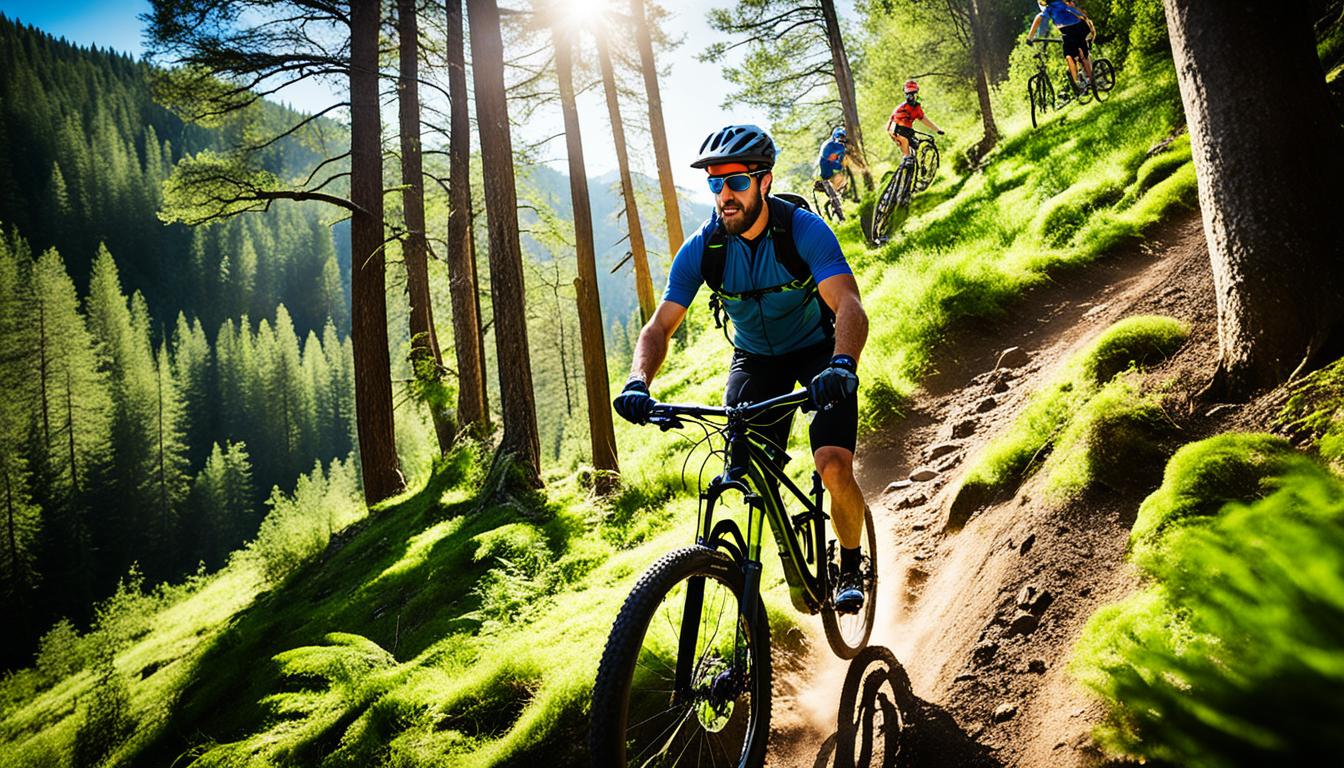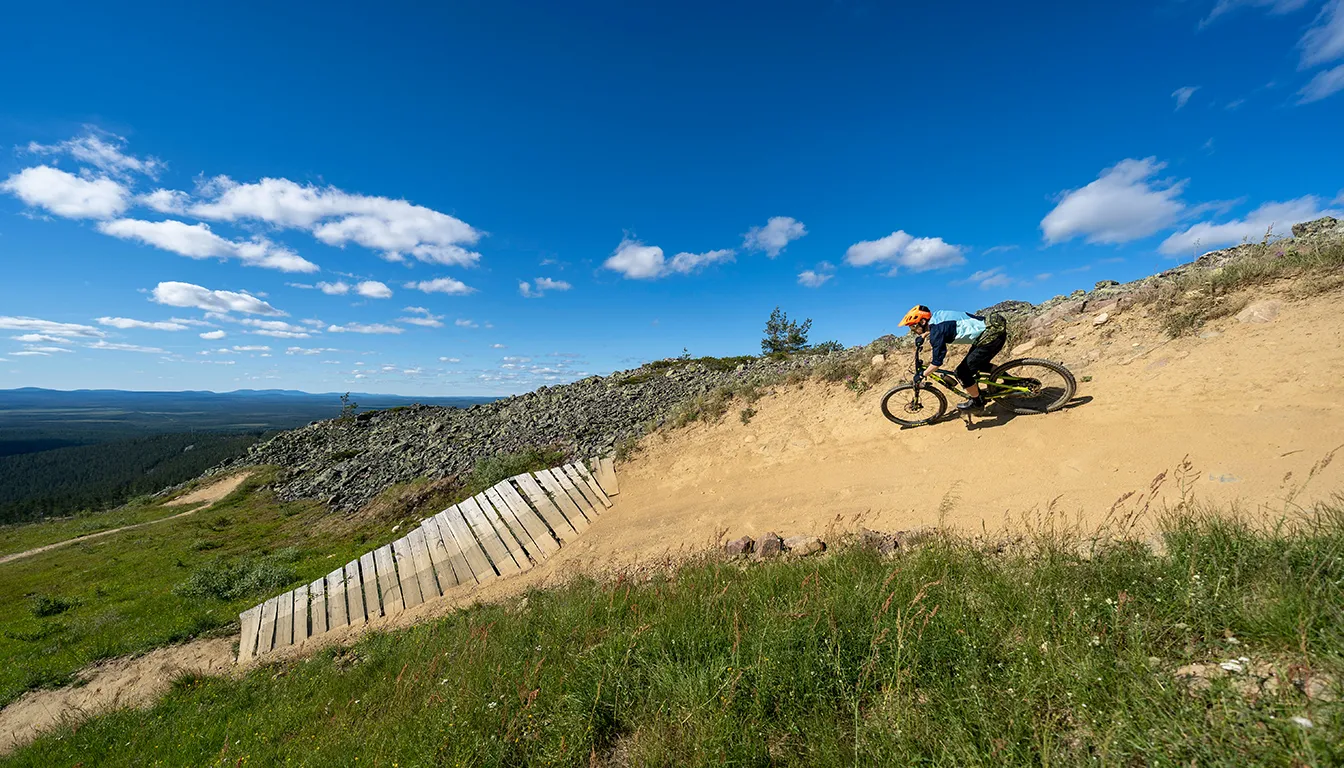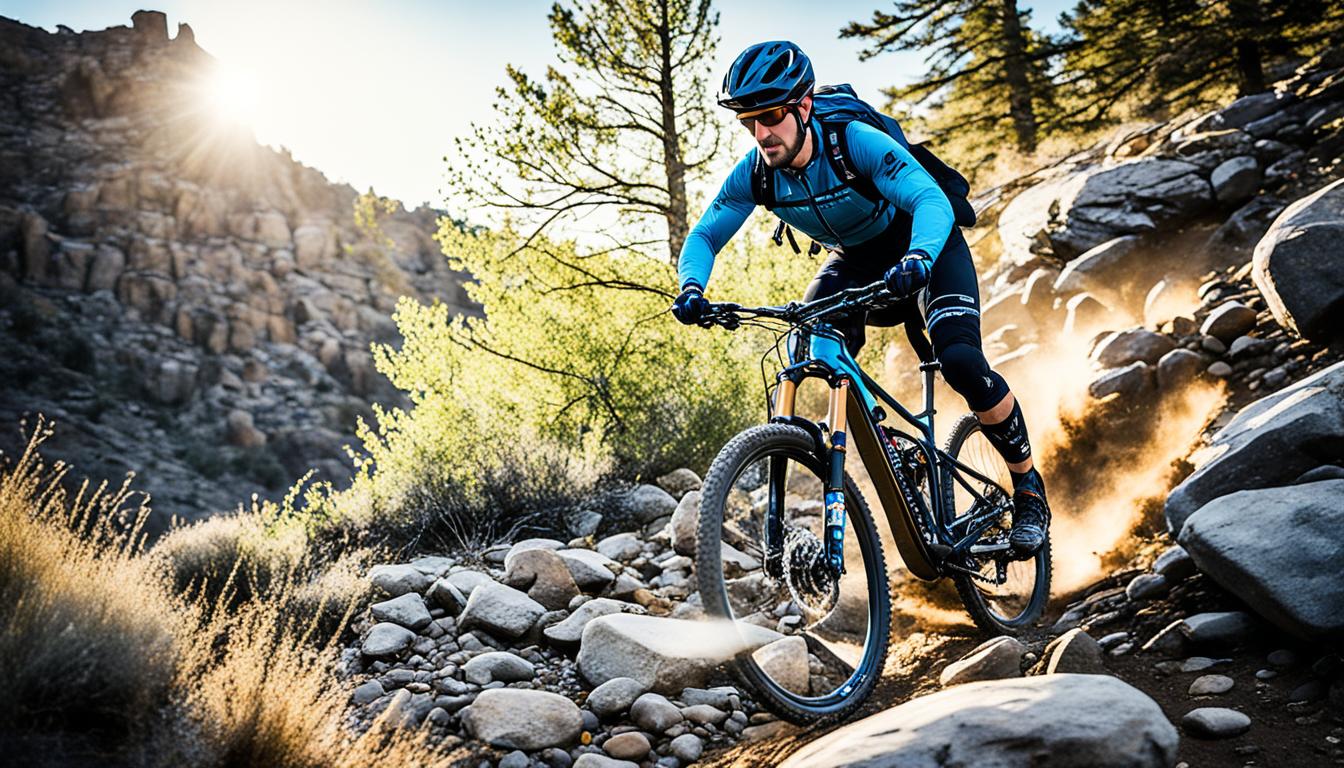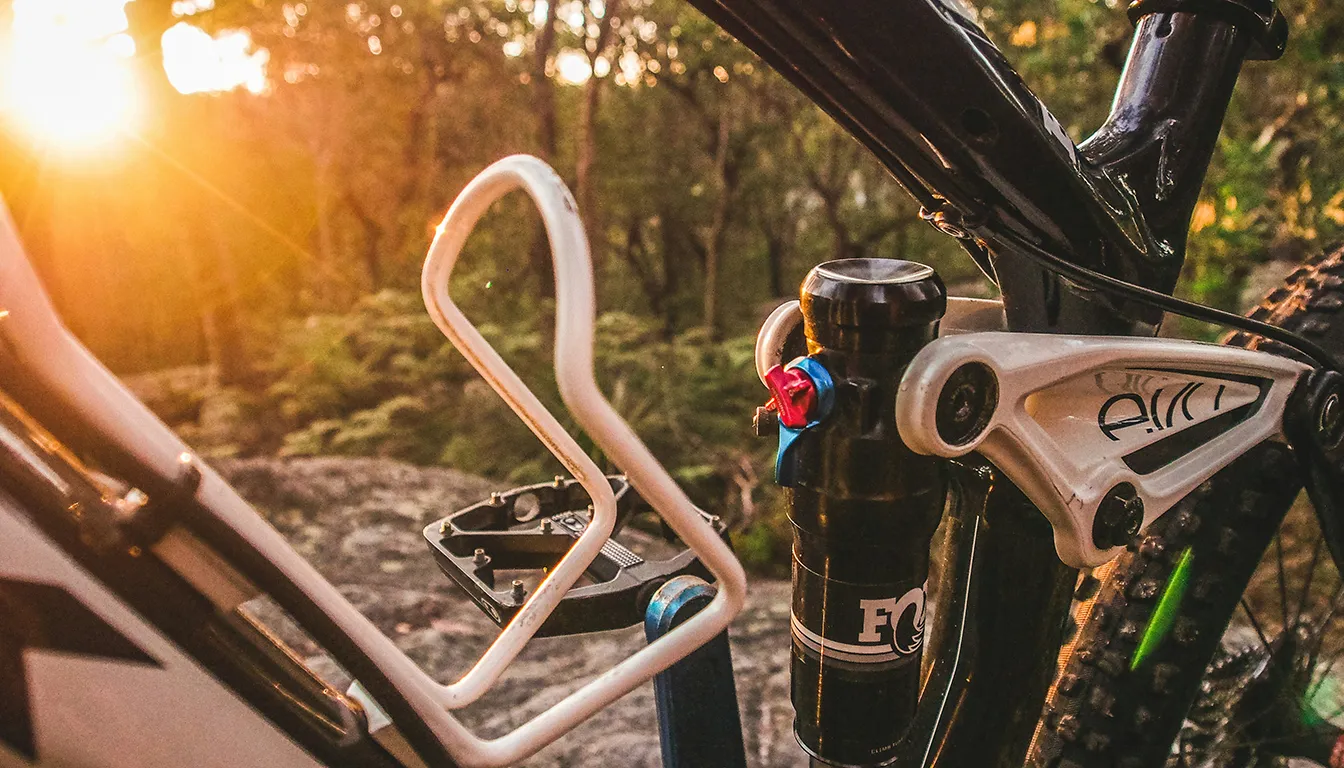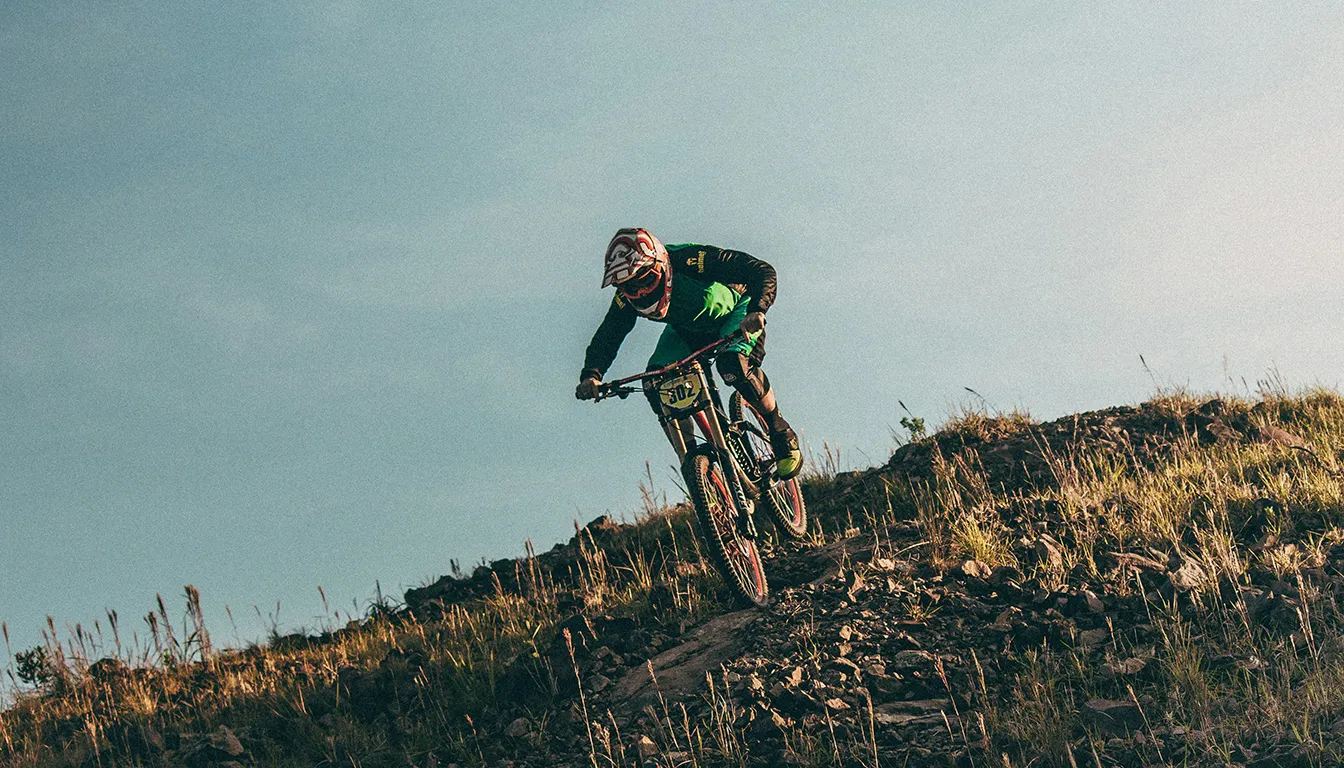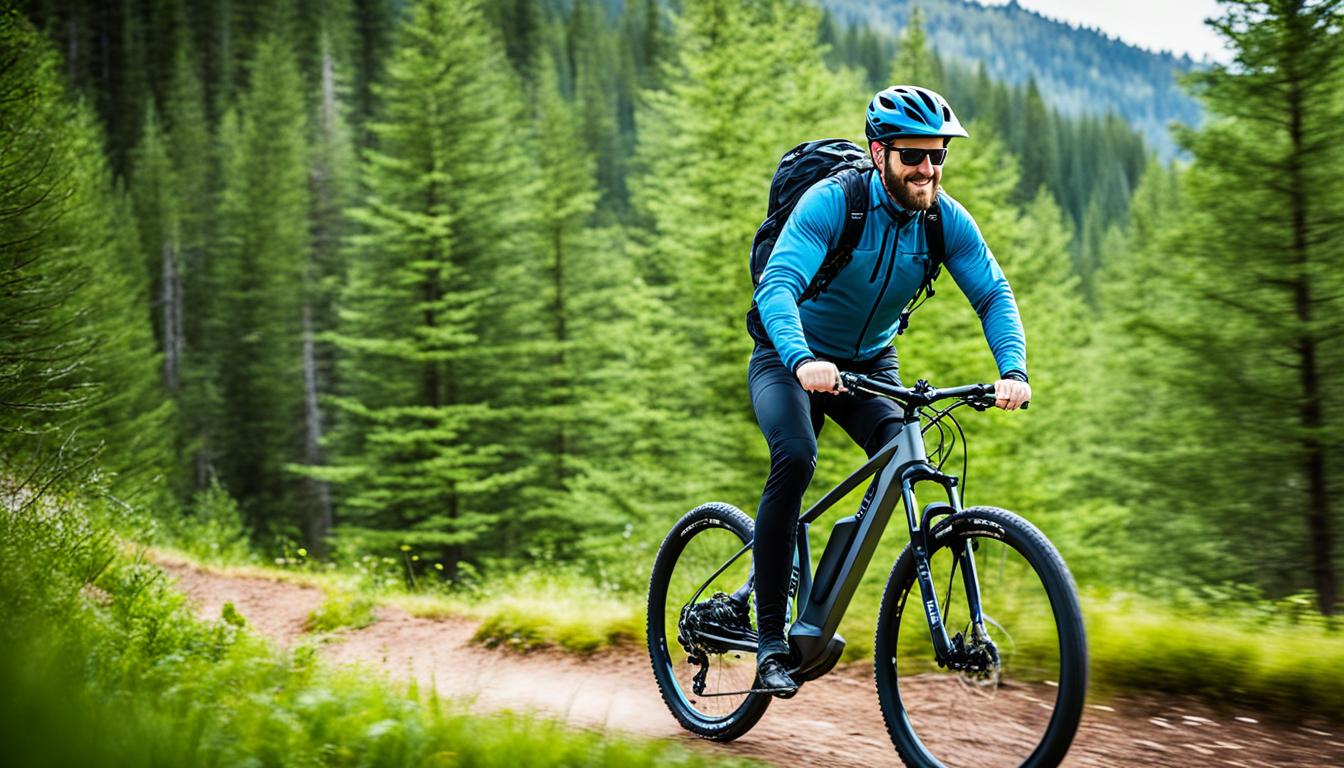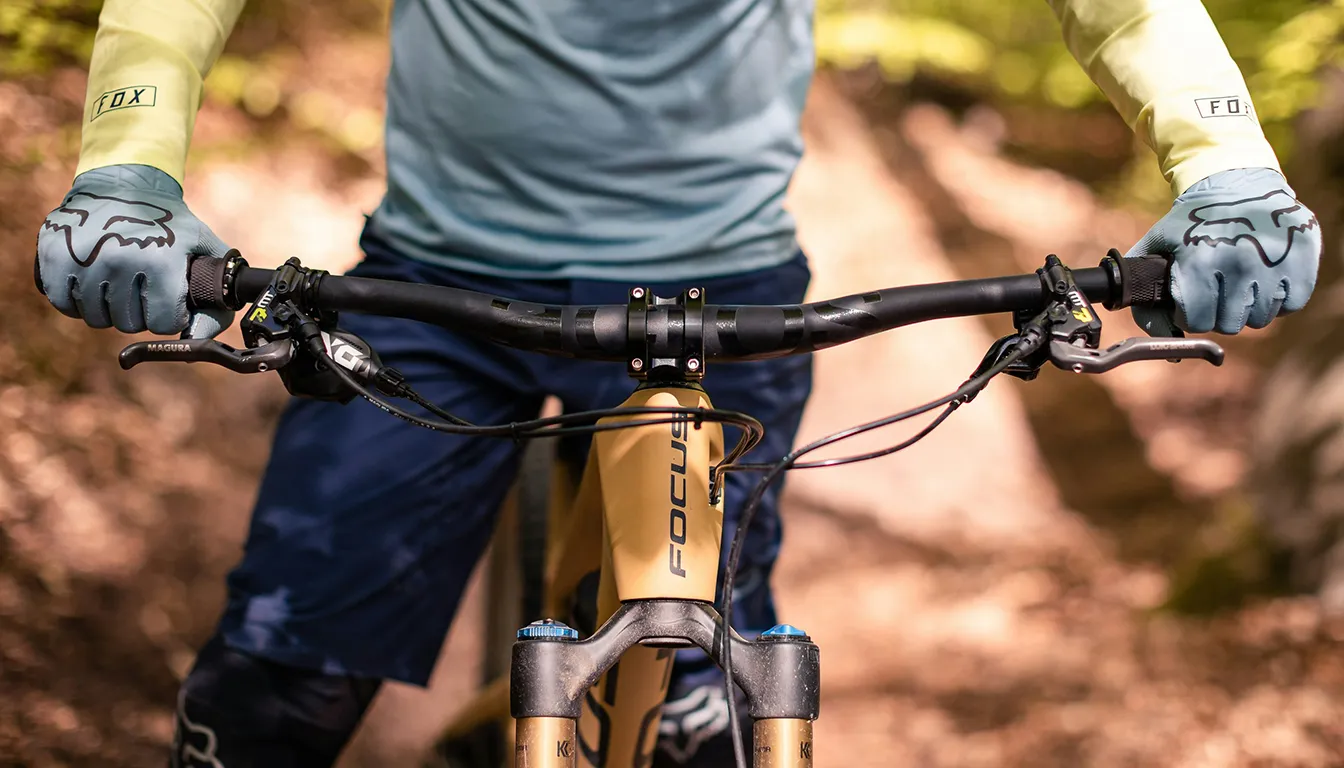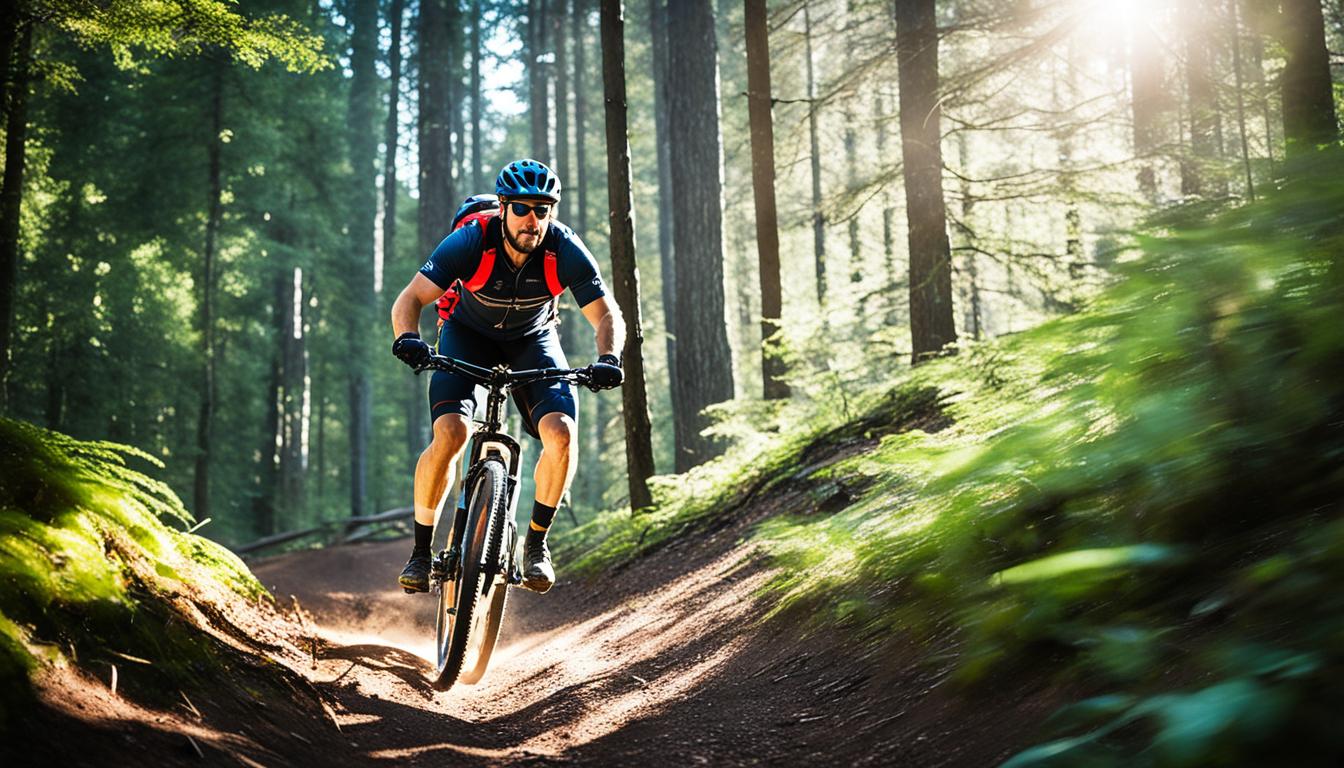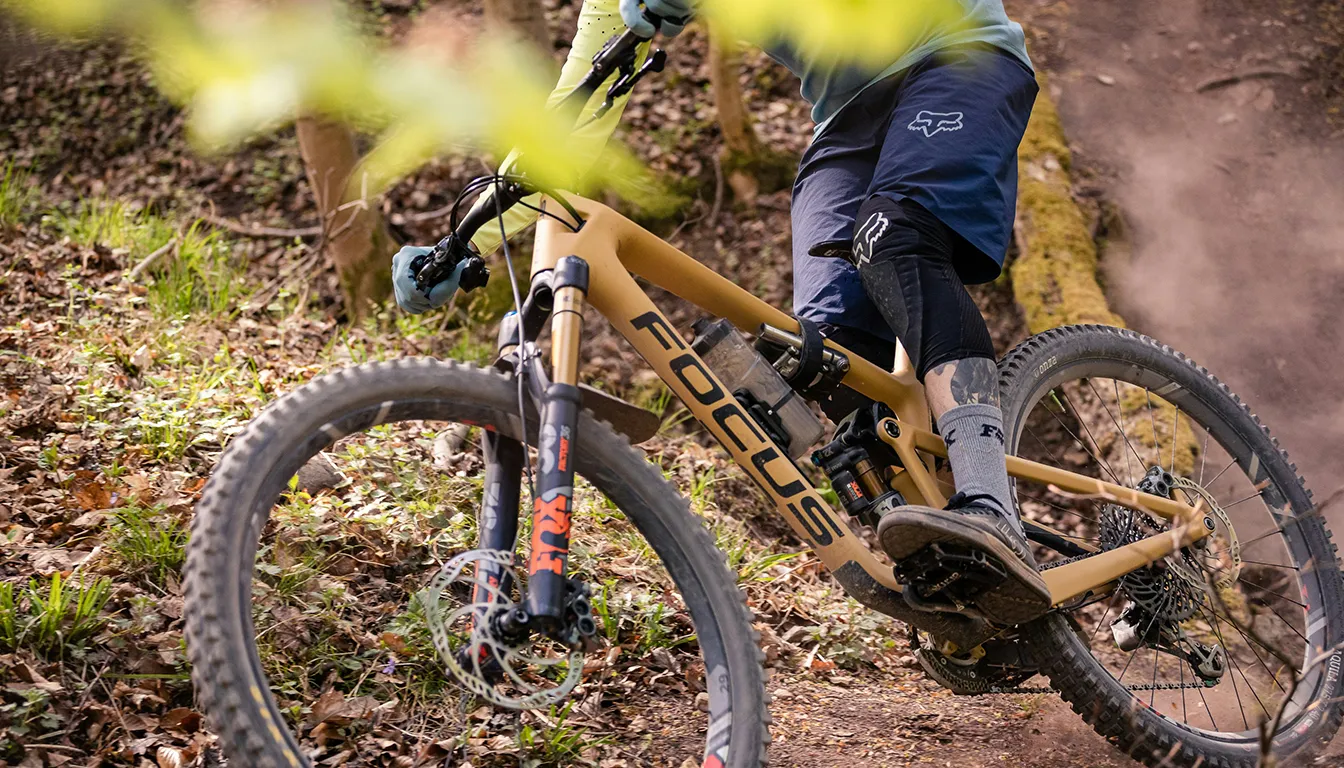Trail mountain biking is a fun way to discover nature, improve your fitness, and boost your confidence. For beginners, starting out in this sport can seem tough but rewarding. It is vital to learn about trail mountain biking basics, including gear, riding techniques, and safety.
Questions about what bike to use, right gear, and how to stay safe are common among beginners. Learning these basics helps new riders enjoy mountain biking to the fullest. Choosing the right bike and using mountain biking tips can make rides safer and more fun.
Understanding the Basics of Mountain Biking
For those starting out, learning the essentials of mountain biking is a must. You need to get good at handling different types of ground. Knowing how to keep your balance and where to place your body is critical. It helps you tackle rocky areas, cross streams, and go up steep hills.
It’s important for beginners to keep moving at a steady pace. Keeping a consistent speed makes it easier to get through tough spots. Mastering key techniques like shifting gears right and adjusting the suspension can make riding much better.
It’s crucial to understand trail grades too. Trails range from easy to hard. Start with green (easy) and blue (moderate) trails. Then, as you get better, try more challenging ones.
Trails are designed for a wide range of skills, from basic to advanced. Being physically fit is key because different trails need different fitness levels. Learning about the right gear is important too. Your gear can vary, depending on how experienced you are and the terrain. Getting to know about biking equipment helps.
- Learn bike inspection and setup.
- Practice braking control and gear shifting techniques.
- Develop slow speed control and body position awareness.
- Understand how to shift weight effectively.
- Work on lifting the front wheel if necessary.
With the right mindset, beginners can gain the key skills for mountain biking. This ensures a safe and fun time on the trails.
Types of Mountain Biking Styles
Mountain biking comes in different styles, each offering unique challenges. It’s crucial to know these to pick what suits you best.
Cross-Country Biking is great for starters. It has easier trails that help newcomers grasp the basics and improve fitness. These bikes emphasize lightness and efficient shifting for ease and long-distance rides.
All-Mountain Biking, or Enduro, means riding varied terrains. It combines tough climbs with tricky descents. It’s perfect for those wanting to up their game and face more varied challenges.
Downhill Biking is all about fast, steep trails meant for thrill-seekers. Bike parks are where this action happens, packed with jumps and obstacles. However, it comes with a higher injury risk, recommending it for the more skilled riders.
Choosing your mountain biking style should match your starting skills and fitness level. Gradually increasing the challenge helps grow your abilities safely in this exciting sport.
Choosing the Right Mountain Bike
Choosing your mountain bike can feel overwhelming, especially for new riders. There are many styles to consider. This part explains the main types: full-suspension and hardtail bikes. It also covers bike frame and wheel sizes.
Types of Bikes: Full-Suspension vs Hardtail
Full-suspension bikes have shock absorbers in the front and back. They offer a comfy ride on difficult terrain. They’re perfect for rough trails and steep downhills. This design gives riders an exciting adventure on mountains.
Hardtail bikes, however, only have front suspension. They’re less expensive, which makes them great for beginners. Beginners can learn basic skills on easier paths with them. So, new riders can pick a bike that suits their style.
Understanding Frame Sizes and Wheel Sizes
Getting the right size for your mountain bike is key. Frame sizes range from XS to XL to fit all riders. Wheel size also affects how the bike performs. For example, 27.5” wheels are nimble on curvy tracks. Meanwhile, 29” wheels are faster on straight routes, perfect for speed lovers.
Choosing the right frame and wheel size makes biking more enjoyable. Talking to a biking community can also help you find the best bike. For tips on biking skills, see this beginner’s guide.
Essential Gear for Trail Mountain Biking for Beginners
Starting trail mountain biking is more than buying a bike. It’s about choosing the right gear for comfort and safety. As a beginner, it’s important to know which apparel and protective gear will make riding better. With so many options, picking the right items might seem hard. But the right choices can make your trail times amazing.
Apparel: What to Wear on the Trails
For beginners, wearing breathable and moisture-wicking clothes is key. Riders often wear loose shorts with padded Lycra shorts underneath. Downhill and trail enthusiasts prefer this, while cross-country cyclists might choose full Lycra outfits. A loose jersey keeps you comfortable. Padded shorts help with rough trails. Waterproof gear is great for different weather. And long socks protect you from thorns and debris.
Protective Gear: Safety First!
Don’t overlook safety. It’s crucial. A good helmet can cut head injury risk in half. Helmets like the Rudy Project Protera+, with MIPS, are great. They help reduce impact forces. For bike parks and enduro races, full-face helmets are advised. Gloves protect your hands. Full-finger ones are best. Knee pads are essential for joint protection. For hydration on long rides, try the Dakine Hot Laps 5L pack. Quality gear gives you the confidence to enjoy biking to the fullest.
FAQ
What are the benefits of trail mountain biking for beginners?
Trail mountain biking offers improved fitness and confidence. It also lets you connect with nature. You can explore beautiful landscapes while getting stronger and learning biking skills.
What type of bike should beginners choose for mountain biking?
Beginners might pick a hardtail bike for its simplicity and lower cost. This is great for learning the basics. A full-suspension bike, however, offers more comfort on tough terrains. Choose a bike that suits your style and comfort.
How important is gear and apparel for trail mountain biking?
Proper gear and apparel are key for a safe, enjoyable ride. Wear breathable clothing that wicks away sweat. Also, helmets, gloves, and knee pads are vital for your safety, especially on tough rides.
What basic skills should beginners learn before hitting the trails?
Beginners should learn to balance, position their bodies, and keep moving. Knowing how to use gears and suspension helps you navigate different terrains. This improves your overall riding experience.
What is the difference between cross-country and downhill mountain biking?
Cross-country biking is good for beginners, with easier trails that improve your fitness and skills. Downhill biking is for thrill-seekers, focusing on steep, fast descents. It offers an adrenaline rush.
How can beginners ensure they’re choosing the right frame size for their bike?
Choosing the right frame size is crucial for comfort and control. Look at the manufacturer’s size guide, ranging from XS to XL. Also, try getting a professional fitting at a local bike shop to find the perfect match.
How can understanding trail grading help beginners?
Knowing trail grades is important for safety and fun. Beginners should start with green and blue trails that are easier. This helps you gain confidence before trying harder trails. It’s all about making smart trail choices.
What should I include in my hydration pack for riding?
Your hydration pack should have plenty of water for the ride. Also pack snacks, tools for quick repairs, and a first aid kit for emergencies. Staying hydrated is crucial, especially on long rides.
